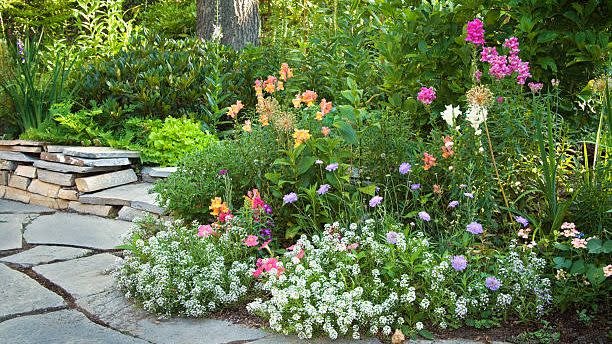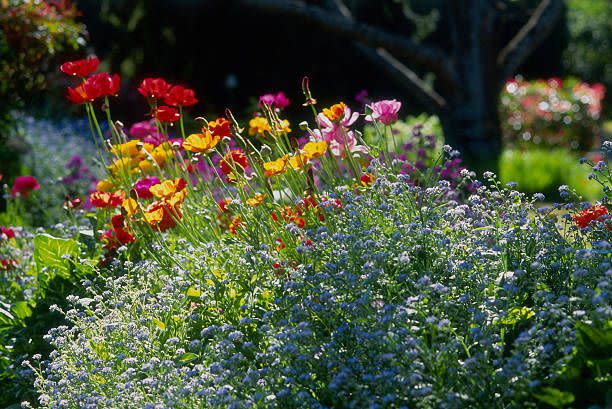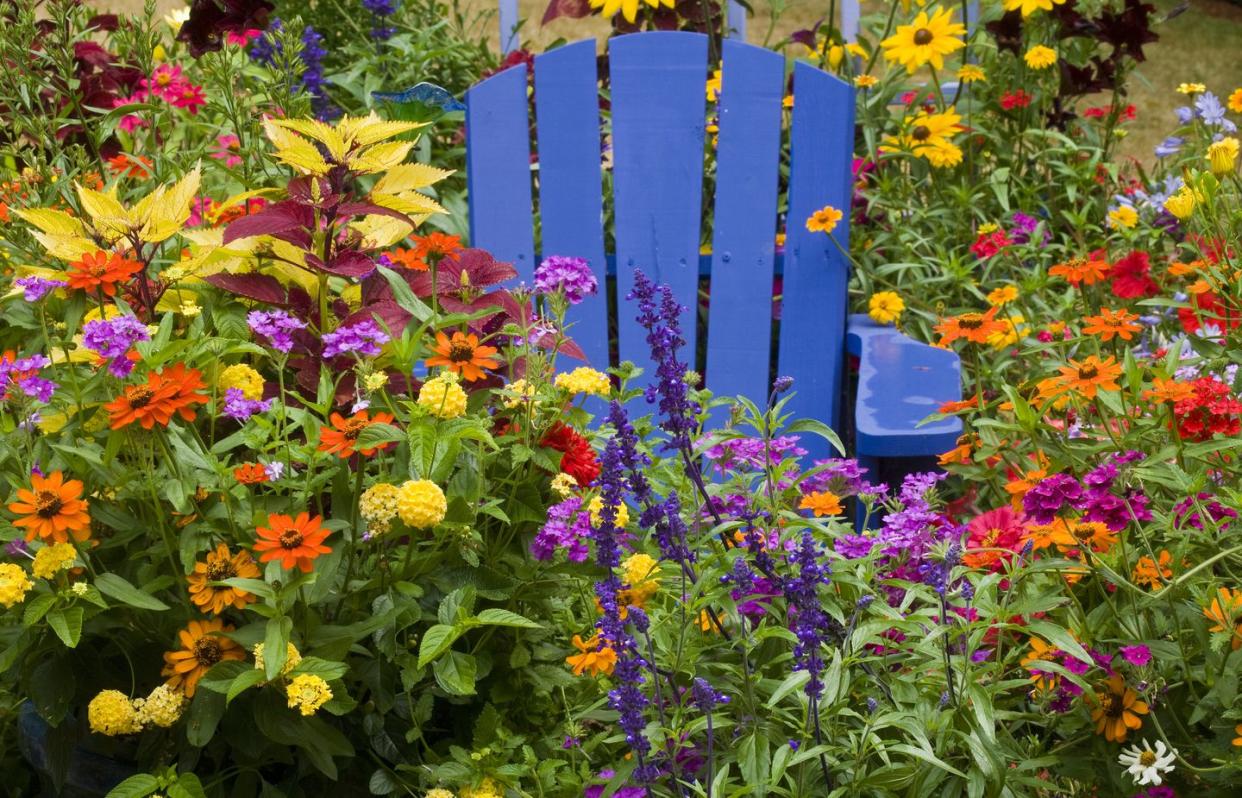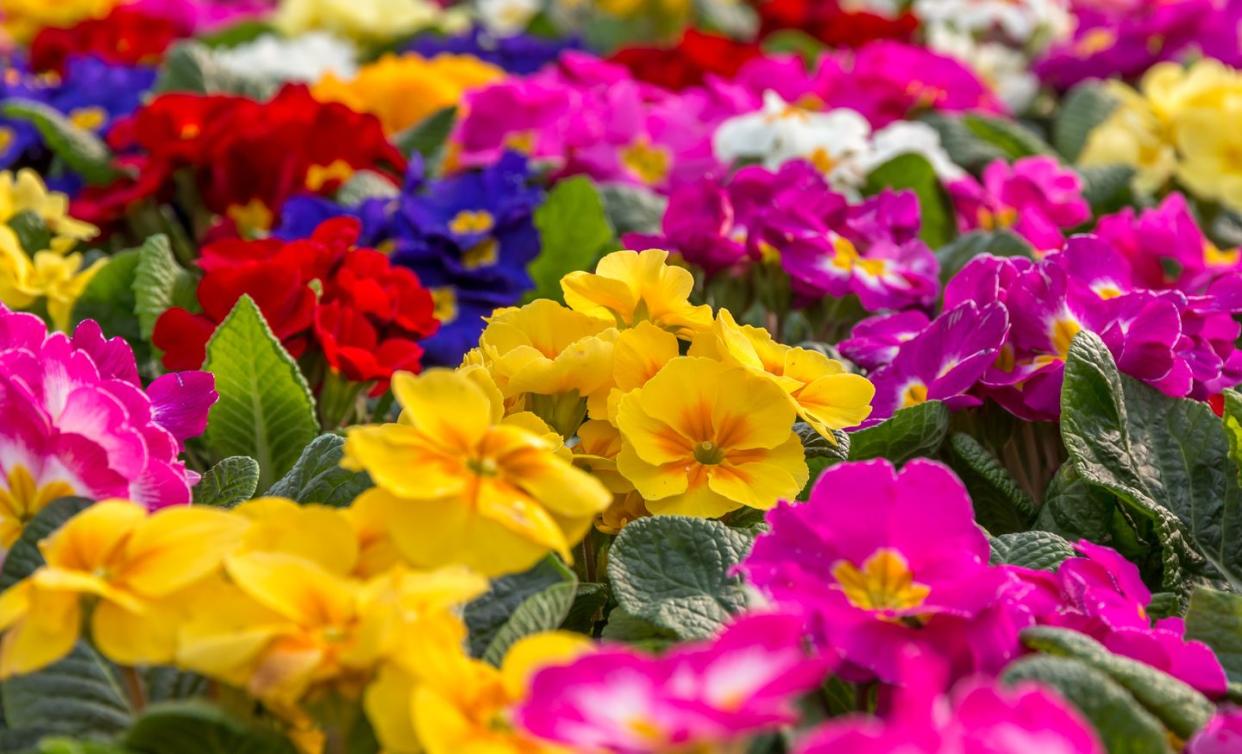Should You Plant Annuals or Perennials In Your Garden? Here's the Difference

If you’re wondering whether you should plant annual flowers or perennial flowers in your garden, you don’t have to limit yourself! Both types have a place in every landscape, whether you have a big, rambling country yard, a tiny urban plot, a cottage garden or pots on your patio, deck, or balcony.
But when it comes to annuals vs. perennials, what's the difference? Well, annuals live for one year, so you plant them (big surprise!) annually. Perennials live for many years, if they have the right conditions, so you only need to plant them once. The most important thing to know is that you must give both types of plants the right conditions. If you've ever heard the old saying among gardeners, “Right plant, right place,” it means no sticking the sun lover in the shade or the shade lover in the sun—no matter how good you think it looks there.
Read the plant tag or description before buying fl0wers and have an idea in mind about where you’re going to put your new plant before you start digging in planters or flower beds. Finally, make sure any perennial you buy is suited to your climate so they’ll survive winter where you live (check your USDA Plant Hardiness Zone). It simply doesn’t make sense to waste money by ignoring a plant’s needs! Here’s what else you need to know about annuals vs. perennials.

What is an annual?
The most important thing to know: annual plants will only last one season in the garden. Despite that, there's so much to love about these blooms! Annuals are good for fast color. Because they have a shorter lifespan, they'll offer instant gratification with bright pops of color for beds, containers, and window boxes. They usually bloom all season long, from the second you plant them until the first frost in your part of the country. Their flowers typically are big and bold!
They’re also inexpensive and usually found in single pots and four- or six-packs. Another plus? Many annuals, such as marigolds, nasturtiums, and morning glories are easy to grow from seed, which makes them even more economical. But because they won't continue to pop up year after year, you'll actually want to plant both annuals and perennials in your beds, borders, and containers for a garden that will be bright and blooming throughout the growing season and beyond.

What is a perennial?
Perennials are less flashy but longer-lived. That means you can plant them now and watch them return for many years. Perennials typically have less glitzy flowers and a brief bloom time of a few weeks or more, which may occur early, late, or somewhere in the middle of the growing season. Some perennials, such as peonies, live for decades. Others, such as columbines and lupines, live several years but eventually fade away. Sometimes they drop seeds, so new plants will pop up on their own in coming years.
Perennials also are more expensive than annuals. Expect to spend several dollars or more per plant. Some can be grown from seed, but they take a few years to mature and bloom. That’s fine if you’re patient, but not so much if you want faster results! You'll also want to be patient with perennials. Another old saying is that perennials “crawl, walk, run,” meaning they're not that impressive the first year, they get a little more vigorous the second year, and by the third year, they really take off.
Don’t be surprised if springtime perennials, such as bleeding hearts, die back and disappear over the summer; they’ll show up again next spring. And don’t be too hard on yourself if not every single perennial you plant comes back. Mother Nature is fickle and many different factors influence whether or not a plant survives, including a particularly hard summer or winter.

How to care for annuals vs. perennials
Actually, they need similar care! Annuals can be planted any time after the last frost in spring—even in the heat of summer to refresh garden beds or pots that have fizzled out. Perennials should be planted in spring or fall. Make sure you plant either type the same depth as they were in the nursery pot.
Keep both types watered, especially when it’s very hot or dry, or if you’re growing them in pots or window boxes, because containers dry out faster than in ground plantings. If soil is pulling away from the side of the container, or if you stick your finger in the pot up to your first knuckle and it’s dry, it’s time to give them a drink. Water until it runs out the bottom of the pot (and always make sure your pot has drainage holes!). During dry spells, you may need to water each container more than once a day.
Annuals can be removed after the first frost or hard freeze, but leave perennials be. Remove debris in the bed to prevent diseases from overwintering, but there’s no need to cut perennials back in fall. Next spring, don’t get overzealous and rip everything out that looks dead: Some perennials take a while to sprout, so give them until late spring to appear in case they’re having a slow start. Also, use garden markers so you’ll know what you planted where. Believe us, you won’t remember next year—and you don’t want to dig anything up accidentally!
You Might Also Like
